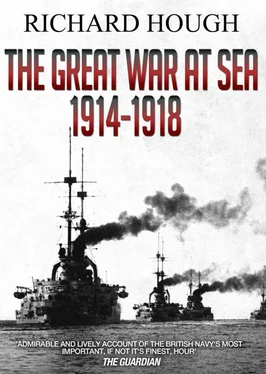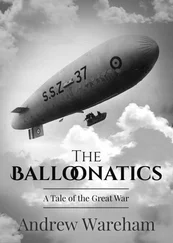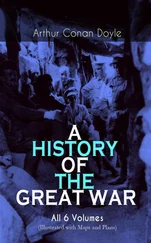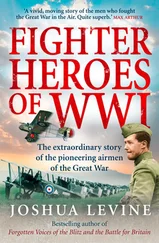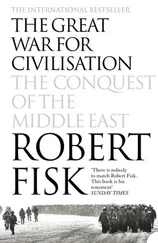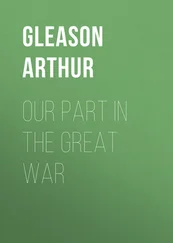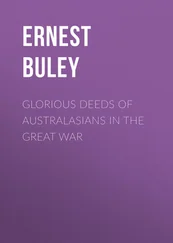There is no doubt that Churchill was arrogant, overbearing, opinionated, and generally insufferable in the eyes of the traditional naval officer of the time. He also had a consistently hostile Press from the more traditionally-minded newspapers. The methods of Mr. Churchill,’ the Globe contended, ‘are wholly unfitted for the great Service of which for the time being he is the responsible head.’ (7)
No one judged Churchill better than Asquith, who regarded his First Lord’s more extreme activities with a mixture of wry amusement and mild vexation. Asquith once described a letter he had received from Churchill as ‘very characteristic: begotten by froth out of foam’. But Asquith had every confidence that Churchill would eventually settle down. He was too clever, and had too clever a wife, to continue to exasperate his friends and create hostility among his colleagues for very long. And, as usual, Asquith was proved right. Two months before war broke out, Tirpitz received a letter from the German naval attaché in London which stated that ‘on the whole the Navy is satisfied with Mr Churchill, because it recognizes that he has done and accomplished more for them than the majority of his predecessors… The intensive co-operation of all forces for an increase in the power and tactical readiness of the English Navy has under Mr. Churchill’s guidance… experienced rather energetic impulses and inspiration. The English Navy is very much aware of it.’ (8)
Churchill’s prodigious work and fundamental reforms for the Royal Navy in 1912-14 were in line with and in scarcely broken continuity with those of Fisher, from whom he encouraged letters (as if that were necessary) containing a torrent of facts and advice. ‘As the man wrote about white leather hunting breeches to his tailor,’ quipped Churchill once to Fisher about his letters, ‘“Keep continually sending”’. (9)Thirty years ahead of his time, and in characteristically violent style, Fisher wrote to Churchill on 16 January 1912: ‘Sea fighting is pure common sense. The first of all its necessities is SPEED, so as to be able to fight-
When you like
Where you like
and How you like.
Therefore the super-Lion, the super-Swift and the super-Submarine are the only three types for fighting ( speed being THE characteristic of each of these types). AVIATION has wiped out the intermediate types…’ (10)
There was a brief cooling-off when Fisher disapproved of some naval appointments but Churchill soon charmed him back with an irresistible imitation to cruise in the Mediterranean in the Enchantress with his wife, the Prime Minister, the First Sea Lord, and numerous other bigwigs on board.
Churchill took Fisher’s advice to heart on the construction of super-fast big ships, submarines, and ‘AVIATION’ as on much else, and Fisher, out of office but by no means out of power, took a material as well as an inspirational part in all three developments. A division of powerful battleships had been called for. They had to be fast enough to storm ahead of the two parallel lines of contesting battleships in order to ‘turn’ the enemy vanguard and ‘cross the T’ – the classic naval manoeuvre that allowed your full broadside to bear on the bows of the enemy -just as the Japanese Admiral Heihachiro Togo had done in his defeat of the Russians at the Battle of Tsu-Shima (May 1905). They would in theory, fulfil Fisher’s requirement and be able to fight when they liked, where they liked, and how they liked.
Churchill was now determined to go one better in gunpower as well as speed. The 12-inch gun of the Dreadnought firing an 850-pound shell had been followed, at Fisher’s direction, by the 13.5, whose shell weighed 1,400 pounds. In the United States, 14-inch guns were already being developed, and there could be no doubt that Krupps in Germany would eventually go to at least this calibre. Churchill consulted Fisher. A 15-inch gun would fire a shell of almost 2,000 pounds and would be devastatingly effective up to a range of 35,000 yards. Fisher was enthusiastic. ‘No one who has not experienced it’, wrote Churchill in the chapter headed The Romance of Design in his war memoirs, ‘has any idea of the passion and eloquence of this old lion when thoroughly -roused on a technical question… So I hardened my heart and took the plunge. The whole outfit of [15-inch] guns was ordered forthwith.’ (11)
Like everything else, the cost of these new battleships was about double that of the original Dreadnought , itself approaching obsolescence. A speed of 25 knots and 15-inch guns demanded a displacement of 27,500 tons, and to achieve these statistics, Churchill learned from his technical experts, required oil rather than coal fuel. The consumption of oil in Britain in 1912 was extremely modest. The nation’s and the Navy’s energy needs were met almost entirely by God-given coal, the nation’s foundation in both meanings. ‘To commit the Navy irrevocably to oil was indeed “to take arms against a sea of troubles”’, Churchill wrote later.
Fisher was an enthusiast not only for the 15-inch gun but also for oil-fired ships. Oil was efficient and clean. It gave a battleship 40 per cent greater radius of action for the same weight of coal. A coal-burning fleet at sea lacked 25 per cent of its ships which were perforce away refuelling, an exhausting and filthy process anyway. An oil-fired fleet could refuel by turning a tap, and, in all but rough weather, refuel at sea. Oil required less than half the number of stokers. The arguments in favour of oil were incontrovertible, with one exception. It was a foreign not a home mineral.
Churchill passed the problem to Fisher. In June 1912 he wrote: ‘The liquid fuel problem has got to be solved, and the natural, inherent, unavoidable difficulties are such that they require the drive and enthusiasm of a big man. I want you for this viz to crack the nut. No one else can do it so well. Perhaps no one else can do it at all… ‘’ (12)Fisher agreed to chair a Royal Commission on oil. Its report favoured the momentous switch by the Navy from coal to oil. Churchill entered into negotiations with the Anglo-Persian Oil Company and carried through the House of Commons the AngloPersian Oil convention which led to the Navy having what was believed to be a guaranteed supply of oil without any risks of foreign control or interruption.
There thus came into being the magnificent class of five 15-inch gunned Queen Elizabeth battleships whose service in two world wars was pricelessly valuable. And from this time virtually all new British men o’war were fuelled by oil.
Fisher’s demand for ‘super-Submarines’ was even more difficult to meet. Disregarding early experimental craft, the submarine was scarcely a decade old, the first practical vessels being designed by an Irish-born American, J. P. Holland, and introduced into the United States Navy in the 1890s. Fear of underwater weapons went back earlier than this, but it was the fixed mine and the automobile torpedo carried by small craft that were most influential in modifying the tactics and strategy of the battle fleet and the defences of the battleship.
The submarine was at first regarded as a defensive weapon for the protection of harbours, bases and coastlines. The German Navy saw them in this role until after the outbreak of war, and Tirpitz was astonished at the damage the U-boat was able to inflict far from its own base. In Britain, the submarine service grew slowly and in face of the hostility of the great majority of senior officers and members of the Board. When submarines took part in manoeuvres and war games, their successes tended to be discounted. Wilson judged the submarine as ‘Underhand, unfair and damned un-English’. Most officers regarded them as playthings for the eccentric young men who dressed up in oilskins (very necessary) and looked like scruffy North Sea fishermen. The submarine in all major navies was patronizingly regarded as ‘the weapon of the weaker power’.
Читать дальше
